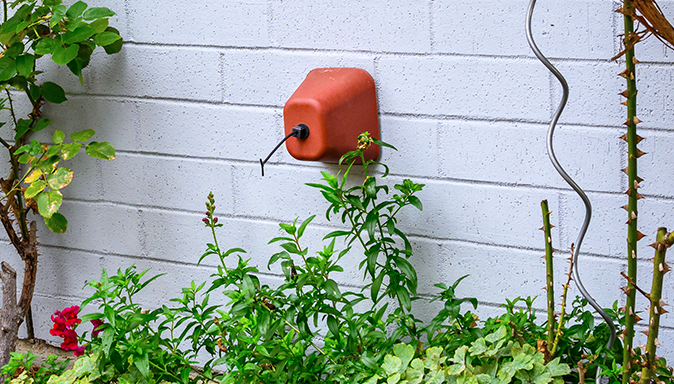The air is crisp and leaves are turning red and gold. With winter just around the corner, it's time to shift your focus to the colder months ahead and start tackling all those essential winterization tasks that will keep your home cozy, efficient, and protected all season long.
Print out our list of DIY projects—inside and out—you should tackle this month.
Outdoor Preparations
○ Winterizing Faucets and Irrigation Systems: Burst pipes can lead to costly damage, so be sure outdoor spigots are winterized to avoid a plumbing disaster. Start by disconnecting and storing all garden hoses from outdoor faucets, then:
• Locate and turn off the indoor water supply shut-off valve.
• Open the outdoor faucet to drain any water that’s left in the pipes; leave the faucet open so any residual water can expand without freezing and causing damage.
• Install insulated faucet covers for extra protection.
If you have a lawn irrigation system, don't forget to drain and winterize it, too. This typically involves shutting off the water supply and blowing out any water that’s left in the pipes.
○ Packing Up the Patio: As outdoor entertaining season comes to an end, be sure to pack up your patio furniture for winter:
• Spray chairs, tables, cushions, and other furniture down with the hose to remove dirt, debris, pollen, and cobwebs.
• Allow everything to dry completely to prevent mold and mildew.
• Stack and cover furniture or move it to a protected area like a garage or shed; cushions should be stored indoors or in weatherproof containers to keep rodents from nesting in them during the cold winter months.
○ Yard and Garden Maintenance: It’s time to put the lawn and garden beds to bed:
• Rake or shred leaves to prevent them from smothering your lawn, then aerate and fertilize your lawn to promote strong root growth over winter.
• Trim dead branches from trees and shrubs to prevent damage from winter storms.
• Plant spring-blooming bulbs like tulips, daffodils, and crocus before the ground freezes.
• Cut back perennials and empty and store garden pots so they don’t crack over the winter.
○ Gutter Maintenance: Be sure you head into winter with clean gutters—it’s crucial for preventing ice dams and water damage:
• Clear leaves and debris from gutters and downspouts and check to make sure that water flows freely away from your home.
• Repair any leaks or damaged sections of the gutter.
• Add gutter guards so gutters stay clear.
Indoor Preparations
○ Furnace Tune-Up: Before the cold weather hits, make sure your heating system is ready to go:
• Schedule a professional HVAC inspection and tune-up to get your system in good working order.
• Replace the furnace filter.
• Test the thermostat to ensure it's working correctly.
○ Check for Drafts: Stopping drafts doesn’t just make your home feel cozier—it can significantly improve your home's energy efficiency:
• Inspect windows and doors for air leaks; add or replace weatherstripping and apply caulk to seal any gaps around window and door frames.
• Block drafts by adding Foam Outlet and Switch Sealers behind the faceplate of outlets and switches on exterior walls.
• Install window kits on drafty windows for an extra layer of insulation.
○ Inspect Insulation: Proper insulation is key to keeping your home comfortable and reducing energy costs:
• Check attic insulation, and add more if necessary to reach the recommended R-value for your region.
• Consider adding insulation to exterior walls, crawl spaces, and the basement if you notice cold spots in your home.
Increase Overall Energy Efficiency
○ Programmable Thermostat: If you haven't already, replace your thermostat with a programmable or smart model. It can help you save on heating costs by automatically adjusting the temperature when you're asleep or away from home.
○ Water Heater Maintenance: Prep your water heater for so you can enjoy hot baths and showers all winter long:
• Flush the tank to remove sediment buildup.
• Set the temperature to 120°F — it will be hot enough for a nice warm shower but not so hot that it can cause scalding.
• If you have an older water heater, insulate it and wrap exposed hot water pipes to reduce heat loss—both project will help you save on water heating bills.
○ Ceiling Fan Direction: Reversing the direction of your ceiling fans so they spin clockwise is an inexpensive way to make rooms feel warmer: It creates an updraft that pushes warm air down from the ceiling, helping to distribute heat more evenly throughout your room. You may also want to add heat and air deflectors to vents to direct warm air down and into your living spaces.
